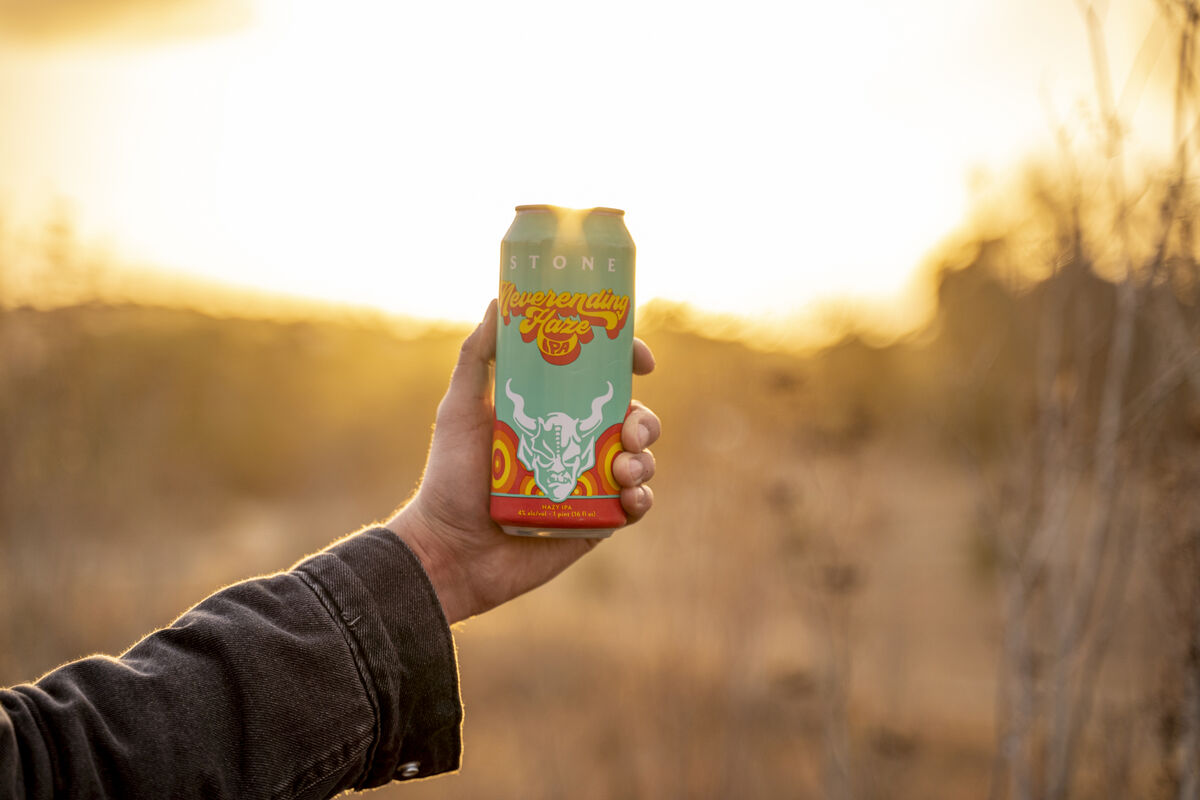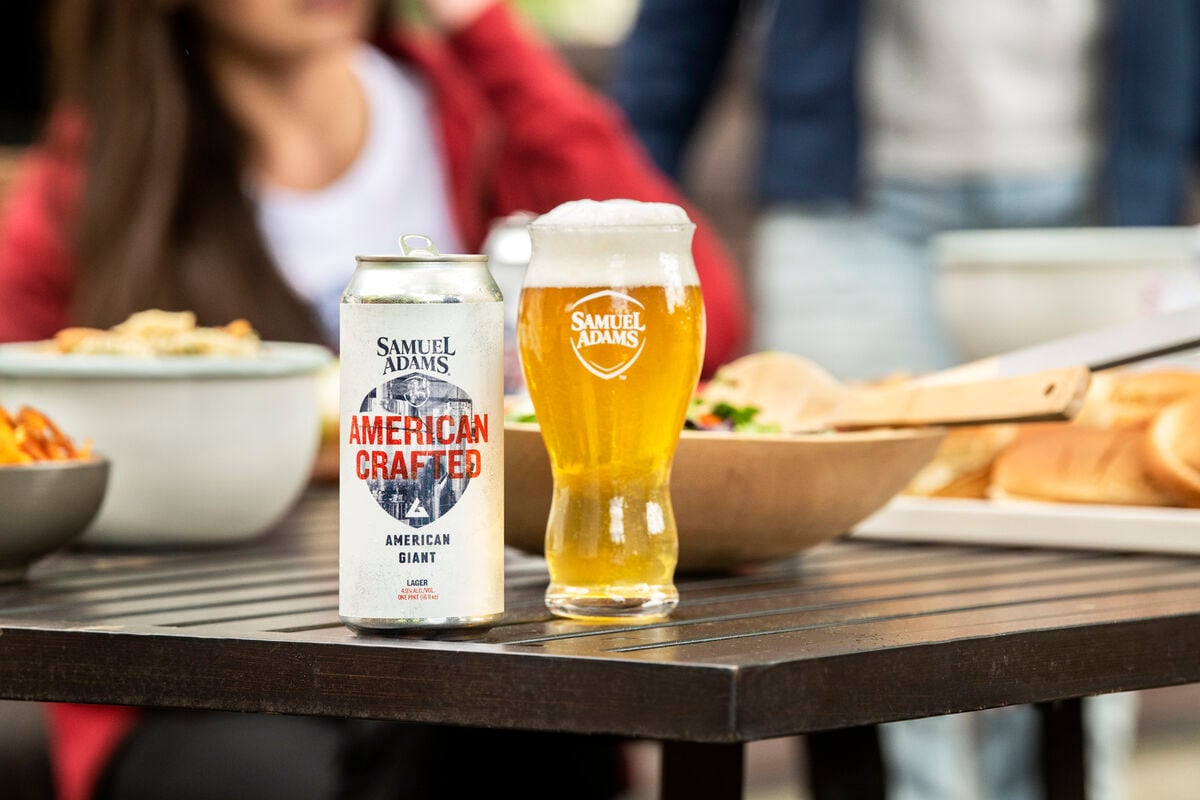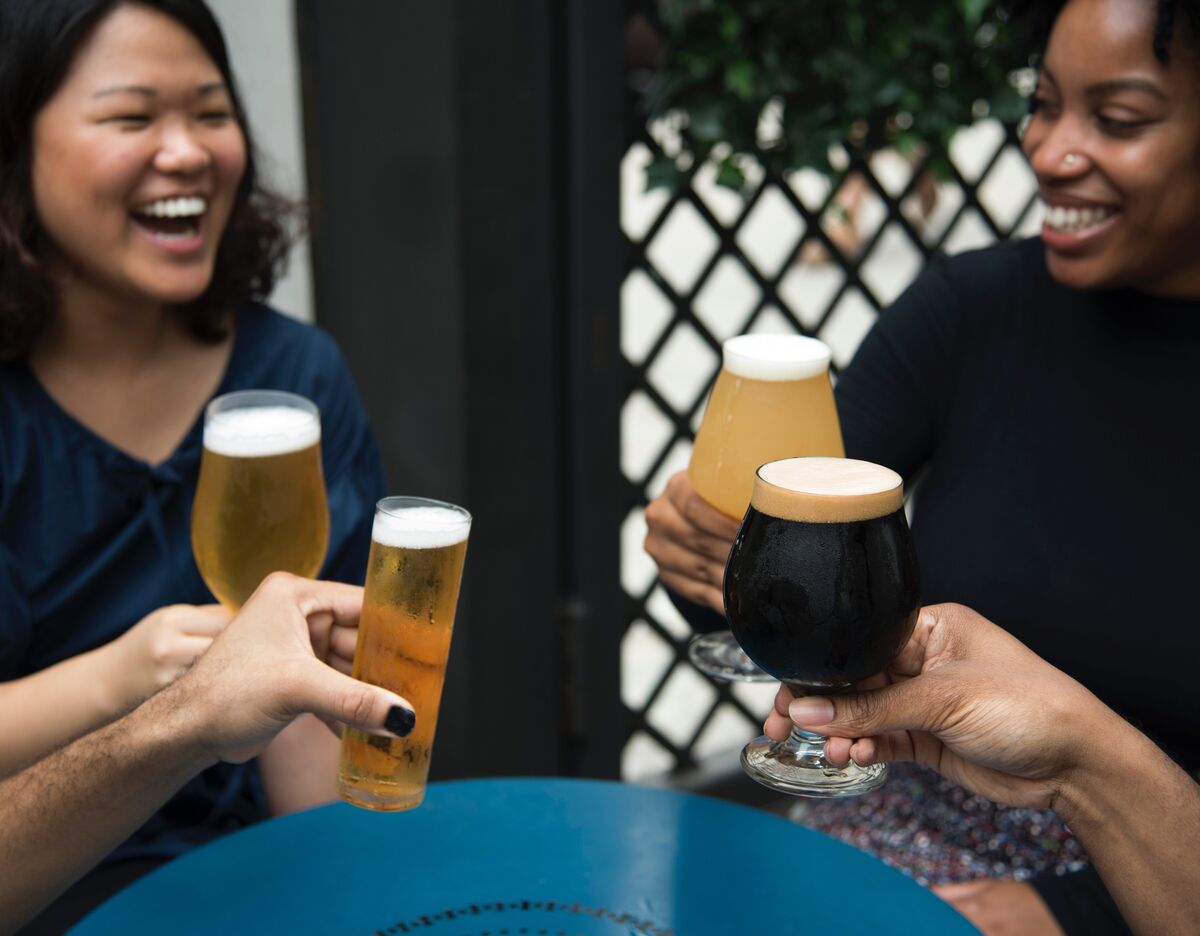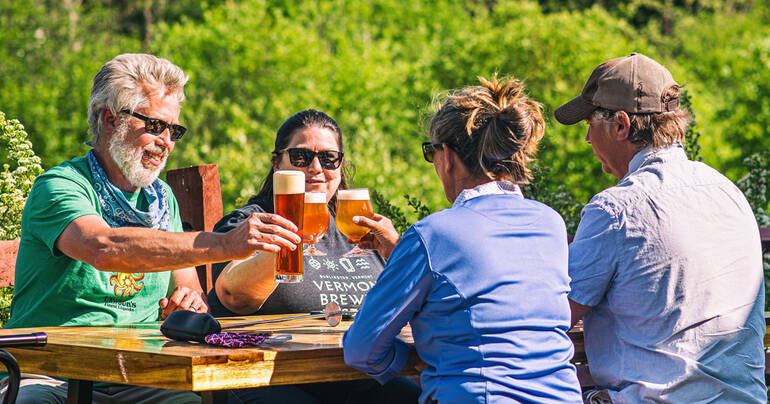Start 14-Day Trial Subscription
*No credit card required

2022 Brewery & Restaurant Trends
We analyze what happened in 2021 in craft beer and forecast where the industry is headed in the new year.
Craft brewing, imports, gastropubs and beer-centric eateries weathered the storm known as COVID-19 in the first year of the pandemic. But the flood waters remained high in 2021. Restaurant growth remains tied to a variety of factors in the industry.
“Pandemic, pandemonium, pain in the ass, whatever you want to call it – it’s been real for the last 18 months,” said David Walker of Firestone Walker Brewing Co. during a mid-year business plan briefing. “I don’t think it’s an exaggeration to say that this has probably been the most disruptive time for the beer business since Prohibition.”
Labor shortages, can shortages and other supply chain disruptions all joined a litany of government closure orders during the initial pandemic months along with a quandary about packaged beer demand from out-of-work home dwellers and telecommuters. Did demand increase or decrease for the stay-at-homes? In the year 2021, while some craft brewers managed to grow despite the prevailing market conditions, independent brewing sales totals remained below pre-pandemic numbers thanks to a slow return for on-premise sales. The number of closings were on track to outpace openings for the second straight year.
As for categories, the hazy IPA boom and the predilection for all the IPA styles among craft drinkers has continued. Not surprisingly, the meteoric growth of hard seltzer, considered a malt beverage by the tax collectors, has slowed, although the “healthy” categories continue to gain ground. Meanwhile, import beers are up thanks primarily to two of the Mexican lagers of Constellation Brands.
In general, beer trends in 2021 are difficult to identify due to the standard method of comparing to the year before. Because 2020 was upside down any comparison gets skewed. In 2020, off-premises sales went up and on-premises went down. In 2021, it is just the opposite—an increase in on-premises sales due to people returning to restaurants and pubs meant a decline in packaged sales on a year-to-year basis. Tracking that included 2019, 2020 and 2021 provided the most accurate measures.
For craft brewers, two constants remain in addition to IPA – tasting rooms and the ability to pivot quickly and creatively due to relatively small size. The pivots included online ordering and curbside pick-ups, expanded outdoor seating, as well as a new emphasis on crowlers and home delivery. All that pivoting means the business of craft brewing has likely changed for the long term.

The hazy IPA boom and the predilection for all IPA styles among craft drinkers has continued.
“Our research shows that many consumer trends may translate into long-term shifts in visitation and behavior post-COVID-19,” said Matthew Crompton of the market research firm CGA. Comparisons to 2019 looked encouraging for on-premises quaffing, decimated by so many deciding to stay home in 2020 even when local orders were lifted. “Trends (in the fall) have mirrored seasonal trends in 2019, suggesting that the country’s on-premises numbers have returned to post-pandemic patterns,” said Crompton. A trend also confirmed by BeerBoard, this return to a familiar pattern in the fall was not enough to bring on-premises sales for the entire year back to previous levels.
Whether it had to do with pandemic-generated health concerns or not, “better-for-you” brews such as low-cal, low-ABV beers, hard seltzer and non-alcoholic beers have continued to gain market share. Home delivery of all alcohol products, including beer and non-alcoholic beers (the latter can be shipped directly to any state), are expected to continue to grow as evidenced by the acquisition of alcohol home delivery service Drizly by Uber in February of 2021.
In off-premises packaged sales, the top three growth styles present what is now a familiar contrast: the appeal of IPA and more health-conscious choices. According to Bump Williams Consulting, tracking indicates that hazy IPA, imperial/double/triple IPA, and low-/non-alcoholic beers added nearly $900 million in off-premises packaged sales to the craft segment in the first three quarters of 2021. Those brewers able to manage both ends of this spectrum fared best.
Among craft brewers, Firestone Walker has become the model for a diverse marketing program, one that has been cited by the Brewers Association’s chief economist Bart Watson. The company’s Mexican-style Cerveza, for example, is pitched differently from Mind Haze, its hazy IPA. There’s also a brand family of drinks being pitched differently after an acquisition of SLO Brewing, which includes all the usual suspects on the periphery of beer: hard seltzer, RTD cocktails, hard tea and lemonade. The tricky part is how to create brand families without losing the brand itself. Apparently, lovers of craft beer and associated beverages are willing to rock ‘n’ roll with this approach.
Mega brewers, of course, are old hands at offering different pitches for different products under one corporate umbrella. Standing out in 2021 was Molson Coors Beverage Co., which appears to be making good on its re-branding from beer to a beverage company. Interestingly, the sales of Coors Light have bounced back and increased market share. The company also sold two million cases of non-alcoholic beer in the first nine months of 2021. When coupled with Coors Light’s surge, it suggests an overall pivot to “better for you” is working, including a new pitch for a low-calorie organic brew called Pure.
If one has the impression that craft brewing success is increasingly pegged to marketing (beyond the traditional social media) and beverages other than beer, that is probably accurate for many in the annual Top 100 beer-by-volume list as published by the Brewers Association. But for all independent brewers, 2021 was about getting the mix right, starting with innovation with the beer list and how to get brews to consumers most effectively.

Halfway through the year, sales results achieved by craft brewers were mixed. Off-premises, or packaged sales, were level while on-premises sales at restaurants and bars continued to lag.
Halfway through the year, the results achieved by craft brewers, according to member surveys by the BA, were mixed. Off-premises, or packaged sales, were level with comparisons to 2019. On-premises sales at restaurants and bars, however, continued to lag. Traffic in tasting rooms, according to data from Arryved, looked as if the growth trend of 2019 had picked up again in 2021.
“If I were forced to guess, I’d wager that at-the-brewery sales in the first half of 2021 were at least at 2019 levels, if not a bit stronger, meaning much stronger than 2020,” wrote the BA’s Watson in a member update.
Watson’s viewpoint on what is driving craft beer remains unchanged. Craft beer drinkers continue to like getting hopped up on the style that packs the most humulus lupulus. “At a high level, IPA continues to grow in importance,” wrote Watson. “While we can’t know style share in brewpubs and taprooms… scan data shows IPA dwarfing all other style categories and continuing to grow. The broadest bucket is now 41 percent of volume over the last 52 weeks in IRI Group data.” Compared with 2020, that means IPA has grown by two percent over its 39.0 share of the packaged retail market last year. It has grown four percent since 2018. “A few years ago, hazy, imperial and American [IPA] were all growing. Last year it was just hazy and imperial,” wrote Watson.
Beyond craft beer and outside of seltzer, where the rate of growth has sharply decelerated, the import category has scored with the trend toward lighter, easier-drinking beers through more effective marketing of brews from Mexico. In the third year since Constellation began marketing its Modelo Especial and Pacifico brands to mainstream consumers in addition to Hispanic drinkers, the strategy proved successful. Modelo Especial was the fastest-growing beer among all of the top ten brands through Sept. 5, up 12.2 percent. Dollar sales through that date topped $2 billion.
On the eatery side, beer-centric restaurants and gastropubs have been challenged along with restaurateurs in general. The National Restaurant Association, which uses member surveys, reported that in the first six months of 2020 one in six restaurants closed temporarily or for good. Emerging restaurants have had to ut
Among the survivors operating brewpubs, beer-centric restaurants and gastropubs, nimbleness has been the trend, starting with escaping the pandemonium of 2020. A strong brand that sustained loyalty was significant when it came to survival. Survivors had to have the ability to pivot to a take-out model that included beer and outdoor seating. Financial agility was mandatory, which meant negotiating with banks, federal government programs, the Small Business Administration and landlords. In addition to offering fresh beers at the source, tasting rooms have myriad food options, including “bring your own,” order in, prepared-on-location or food trucks.

Whether it had to do with pandemic-generated health concerns or not, “better-for-you” brews such as low-cal, low-ABV beers, hard seltzer and non-alcoholic beers have continued to gain market share.
A connection to food was significant, although not always a game-changer. Falling Rock, the longtime house of craft gospel in Denver that served good food along with up to 75 choices of sought-after beers, closed in 2021. The trend toward brewery tasting rooms, which appears to have sustained a return to growth in 2021, was a key factor in the decision by owner Chris Black to close halfway through the year, according to an interview with The New York Times.
Other well-known craft beer outlets also closed such as the original Ginger Man in Houston (other locations carry on) and Deep Ellum near Boston (not to be confused with Deep Ellum Brewing Co. in Dallas, Texas), which was remodeled to facilitate an expansion of the taqueria next door. Considered one of the preeminent craft locations on the East Coast, The Brick Store Pub in Decatur, Georgia hustled to expand its outdoor space in order to survive. Longtime fixture Max Lager’s in downtown Atlanta, meanwhile, closed temporarily for remodeling while owner John Roberts and his staff concentrated on a well-received launch of its Bold Monk brewpub in a space more suited to pandemic circumstances.
Monk’s Kettle, which opened in 2007 in San Francisco, survived a citywide shutdown and myriad new ordinances thanks to a strong following in addition to its pivot to take-out and some financial gymnastics – such as generating cash by selling off the Cantillon bottles in its cellar, which raised $17,000. “We are fortunate that people love our brand,” said co-owner Christian Albertson. “We made a decision to become a neighborhood tavern after we first opened – not just a craft beer bar.”
Monk’s Kettle is known for its eclectic restaurant menu (think lamb burgers and salmon niçoise) and an extensive draft and bottle list of import and craft beers that pair well with the menu. After securing a federally backed payroll loan with the help of its bank during the pandemic, the Mission District gastropub trimmed staff down to the two owners, the chef and a front-end and back-end employee in its transition to a take-out model. The owners eventually took advantage of a city ordinance and created an outdoor space in the street using adjacent parking spaces.
Partnering with two other restaurant owners, Albertson and his fellow co-owner Nat Cutler have recently opened a second location in nearby Marin County after briefly postponing a previously approved SBA loan, evidence that the gastropub space remains dynamic.
One of the longest-standing beer-centric restaurants are the Flying Saucer Drought Emporiums, whose 25th anniversary in 2020 turned out to be a low-key affair. Twelve of the 13 restaurants in the states of Texas, North Carolina, Tennessee and Arkansas survived thanks to experienced managers, loyal customers (many of them participants in the Beerknurds loyalty program) and by pivoting to outdoor spaces and offering to-go beer.

Many breweries had to scramble to create safe and inviting outdoor spaces in 2021 as the COVID-19 pandemic continued.
In 2021, there have been two challenges, said Flying Saucer co-founder “Captain” Keith Schlabs. First was trying to get departed employees to return. “Beer knowledge isn’t something you learn overnight,” he said. “We retained as many people as possible. But getting the (full) army back was a challenge. Half of them didn’t come back. Our management team was so diligent and flexible, pivoting and doing whatever the hell they had to do. That was a blessing; a lot of those guys have been with us 10 or 12 years.”
The company’s Rodeo Goat locations, six smaller burger and craft beer eateries in Texas, came “rocketing back” in 2021. But the Flying Saucers took longer, in part because of fewer office workers turned telecommuters eating lunch or dropping in for happy hour. “Each market was slow to come back,” said Schlabs. “Everybody wanted to come back, but I think people were a little nervous to be around a large group.”
The ownership had been down this road before, opening their Draught Emporiums in markets before craft beer in those markets was popular and then building a following. In addition to expanding outdoor spaces and queuing up live music, one of the key pivots during the pandemic was the launch of an app in conjunction with Untappd. Introduced to its Beerknurds as “TapThatApp” and identified as a mobile UFO Club, the upgrade in communication has worked well. Known for coordinating just-released beers on tap with those listed on their electronic menus online, the new app helped the managers get nimbler and get the word out faster. The rotation of as many as 20 new craft beers each week suddenly became easier to execute and to share with followers.
“We are on a cloud platform,” said Schlabs. “We are in and out, adding and subtracting in real time and it’s published in real time. If you’re a subscriber you can get an alert. That’s helped us tremendously. Untappd came to us many times and we just decided to do it during the pandemic. We could change on the fly. We were 100 percent legit and accurate with what we were doing in-house.”
Like Firestone Walker and Flying Saucer, breweries and eateries that have been in the crosshairs of COVID continued to operate in 2021 as if they’re in a pandemic-like environment. How much the ongoing innovations influence an upside for craft brewing in the future remains to be seen. For some, the chosen option continued to be just closing the doors.



